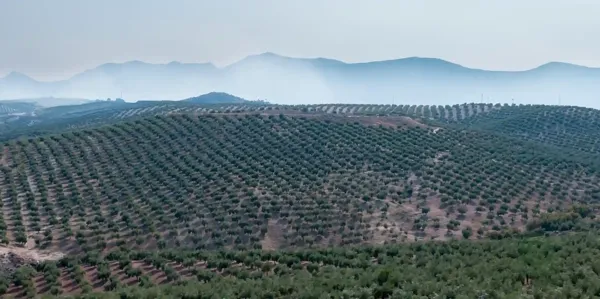Have any questions?
What are dehesa farms?
Dehesa farms are extensive lands, typically enclosed and wooded, characteristic of the southwest of the Iberian Peninsula, mainly used for grazing.
Where can you find dehesa in Spain?
In Spain, there are 3 million hectares of dehesa, according to data from the Ministry of Agriculture.
This area is concentrated in Extremadura, with presence in both the provinces of Cáceres and Badajoz, and in Andalusia, where the provinces of Cádiz, Córdoba, Huelva, and Seville stand out.
It is also found in Castilla-La Mancha, mainly in the provinces of Toledo and Ciudad Real, Castilla y León, mainly in the provinces of Zamora, Salamanca, and Ávila, and in the Community of Madrid.
What characterizes dehesa farms?
The dehesa farms are characterized by being large extensions of land, with an area of more than 100 hectares, and by being populated with tree species, such as holm oaks, cork oaks, and ash trees.
In the dehesas, domestic animals, such as cattle, sheep, goats, and pigs, coexist with wild fauna, such as deer, wild boars, rabbits, and hares.
The dehesas develop in a semi-arid Mediterranean climate, with summers that reach high temperatures and scarce rainfall, and cold and humid winters.
The type of livestock farming in the dehesa is extensive, where livestock such as Iberian pigs, cattle, sheep, and goats are raised. Since it is used for grazing, it favors the breeding of animals that feed on it.
Although livestock farming is the main activity in the dehesa, it allows other secondary uses, such as agricultural (crop planting), forestry (acorn production, cork, firewood...), or hunting (pursuit of big and small game species).
How to acquire a dehesa for sale?
If you wish to acquire a dehesa for sale, you can turn to specialized platforms for the buying and selling of rural properties, such as Cocampo.
On our platform, finding the dehesa for sale that suits your needs is easy thanks to our search system, which allows filtering by location, size, price, and use.
For example, if you're looking for dehesas for sale in Extremadura, just use the location filter and select the provinces of Cáceres and Badajoz.
If you have a defined budget, you can set a price range. If you're looking for a specific size, you can set a minimum and maximum number of hectares.
If you're interested in livestock dehesas for sale or land for other uses, you can filter by use and choose from agricultural, livestock, forestry, hunting, recreational, or other.
Why consider large dehesa farms for sale?
The large dehesas for sale are an opportunity for extensive livestock farming. The land area available is optimal for grazing animals. Similarly, tree species such as oaks and cork oaks provide food for the livestock raised on them.
Additionally, these estates allow for combining livestock use with other uses, such as agricultural, forestry, or hunting. As a result, economic benefits can be obtained through crop cultivation, cork and firewood production, or hunting, as well as from animal husbandry.


































